Positive Improvements on the Planet |
| European
Cities Quietly Leading the Way to a Sustainable Future |
| By UK News Group (Originally in English) |
“Climate
change is a global problem
but the origin of the problem is very local.”
Pedro Ballesteros Torres,
Manager of EU’s Sustainable Energy Europe Campaign
Many European cities have brought environmental responsibility to the local level. They have come up with programs that are both practical and effective, quietly leading the way to sustainability—meeting goals beyond those of the Kyoto Protocol and inspiring green initiatives around the world.
The most notable of all is a quiet, small city in southern Sweden called Växjö. It has become a “green” resort, attracting world political leaders, scientists and businessmen who come to admire and be motivated by its highly successful environment programs which have won the city the Sustainable Energy Europe Award from the EU.
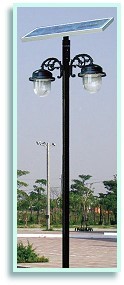 |
|
Sample of energy efficient lighting Provided by
Top Tower Technology Co., Ltd. |
Växjö’s environmental efforts began in the early 1970s! A clean-up of the nearby lakes heavily polluted by local industry and agriculture had started the city on its environmental journey. Since 1993, the emissions of carbon dioxide from the city have been decreasing continuously, achieving an impressive 30 percent reduction by 2006 and a far below global average per capita yearly carbon dioxide (CO2) emission of 3,236kg. Växjö is targeting a reduction of 50 percent by the year 2010 and 70 percent by 2025 (compared to 1993) to become a fossil fuel-free city.
The biggest reduction in emissions has been with the municipal district heating and power plant. They have replaced oil with wood waste from the local forest industry which is burnt to generate electricity. The cooling water that warms up in the process is then used in a district heating system. The ashes from the furnace are sent back to the forest as added nutrients.
In 1994, Växjö began replacing all street lighting with energy efficient bulbs. The city will have completed this retrofitting program by 2009, which could reduce CO2 emissions by 6,000 tons per year.
| Alternatives
to Fossil Fuel Usage |
Initiatives have also been introduced to reduce fossil fuel usage in public transport in the city. Biogas produced at the local sewage treatment plant is used by the public transport system. People are encouraged to buy environmentally friendly cars through government subsidy and are offered free parking anywhere in the city. Subsidized by the municipal council, Växjö Taxi reduced the number of kilo meters driven by 20 percent thanks to a high-tech positioning system that can keep track of cabs by satellite, so that the nearest car can be sent to pick up a passenger. The drivers have also been on an “eco-driving” course to learn how to handle vehicles in the most fuel-efficient way, and the company has hybrid, ethanol-powered and biogas-powered cabs in its fleet.
Many other efforts are made in all areas of the city. They include community grants for private property owners that install solar panels, wood or pellet furnaces to replace oil; individual metering of electricity in student dormitories; and construction of a new residential area with Europe’s tallest all-wood apartment buildings. Växjö is in the middle of a timber industry region where it requires less energy to produce and transport wood than steel or concrete.
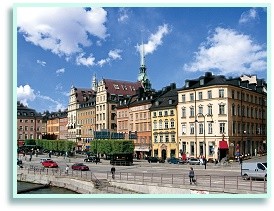 |
Stockholm–a cleaner city. © Photographer: Harryfn, Agency: Dreamstime.com |
Yet this tiny city of 800,000 thousand residents is certainly not alone in its great efforts to tackle this global issue. In 1996, Stockholm successfully piloted a European initiative—ZEUS (Zero and low Emission vehicles in Urban Society), which led to a full roll-out of clean vehicles across the city, starting with all public vehicles. These environmentally friendly means of transport either use bio-fuels or emit less than 120g CO2 /km, typically hybrid or extremely small cars. The city council worked with the fuel industry and the EU to expand the supply of bio-fuel. Collaborating with the national government, NGOs and other cities, they were able to provide incentives and tax benefits to the buyers of clean vehicles. Green vehicles now constitute 20 percent of total car sales in the city, and Stockholm now has the highest percentage of these vehicles in Europe which contribute to 200,000 tons of annual CO2 reduction.
The port city, Göteborg, Sweden, has also made its mark on the path to a greener planet. Normally, most ships get their electricity supply through onboard power generated by auxiliary diesel engines–a highly polluting and energy-consuming method. Göteborg developed an onshore power supply system by using renewable energy from wind turbines to power ships at berth; it has cut port-side emissions from ships by 94-97 percent! The scheme won the European Commission’s “Clean Marine Award” for outstanding environmental achievement in 2004.
| Wise
Energy Efficientand Money Saving Options |
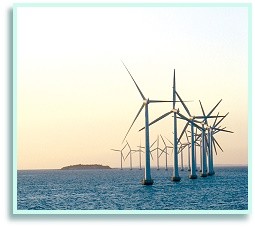 |
Offshore wind farm providing power
to onshore households. © Photographer: Rodiks, Agency: Dreamstime.com |
Copenhagen, Denmark gets 97 percent of its heat from clean, reliable and affordable waste heat captured from the electricity production process. The system was set up in 1984 by five Mayors in partnership with the Metropolitan Copenhagen Heating Transmission (CTR) who run the system jointly with an affiliated company, VEKS. Coupled with the combined heat and power plants switching from coal to natural gas and bio-fuels (straw and wood), the system has cut average household bills by 1,400 EUR annually, and has saved the Copenhagen district the equivalent of 203,000 tons of oil every year, or 665,000 tons of CO2 emissions.
Copenhagen also has the world’s second largest offshore wind farm with 80 wind turbines and a total capacity of 160 MW, enough to power 150,000 Danish households, or 2 percent of Denmark’s total electricity consumption. Offshore turbines produce one and half times more electricity than land-based turbines. The facility contributes to 660,000 tons of CO2 reduction annually.
| Cleaner
Air and Healthier Body – What a Deal! |
In addition to that, Copenhagen is a cyclists’ haven by providing a safe, secure and efficient cycling environment. In 1995, the city introduced a public bicycle service that lets people pick up and return bikes at 120 bike racks throughout the city center. Financed by sponsorships and advertisements, the public-private partnership program is run by a non-profit organization, The City Bike Foundation of Copenhagen. It also provides work for inmates and the unemployed who have to maintain the roads. Now with 36 percent of its residents cycling to work or school, and a goal to increase this to 50 percent by 2015, Copenhagen is truly a “City of Cyclists.” In France, the Vélo’v scheme was launched in May 2005. With a prepaid membership card, which costs one euro for a week and five euros for a year, you can rent bicycles around the city. Over 3,000 bicycles are available from over 350 stations situated around the cities of Lyon and Villeurbanne.
Paris’ Vélib, launched in July 2007, is a replica of Vélo’v, only much bigger. With 10,600 bikes from 750 hire points each with 15 or more bicycles, Mayor Bertrand Delanoe hopes Vélib will cut car traffic in the city by 40 percent by 2020. Community bike programs are also run in Stockholm, Barcelona, London, and some German and Dutch cities.
London has implemented “the central area congestion charge.” It is a daily charge of £8 for driving or parking a vehicle on public roads within the congestion zone between 7 am and 6 pm on working days. In February 2007, the zone doubled to 38 square km, the largest in the world. According to official statistics, traffic levels inside the original charging zone have been cut by 20 percent, equivalent to 75,000 vehicles per day, bringing about a 20-30 percent, or 60,000 tons, annual reduction of CO2 emissions. The main response from car drivers is to switch to public transport and/or ride bicycles.
In August 2007, Stockholm became the second European city, after London, to introduce the congestion charge. Its seven-month trial run in 2006 has cut CO2 emissions by 14 percent and traffic by 22 percent.
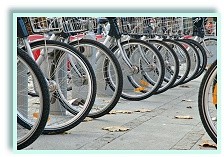 |
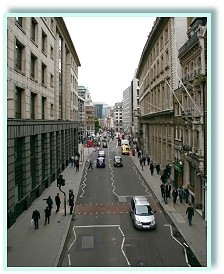 |
| Bicycles used in the Velo’v scheme. © Photographer: Jakezc, Agency: Dreamstime.com | London–reducing traffic in
central areas with a congestion charge. © Photographer: Stephen Finn, Agency: Dreamstime.com |
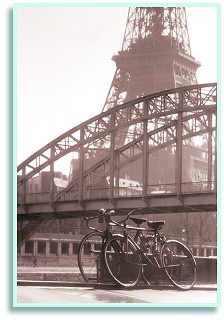 |
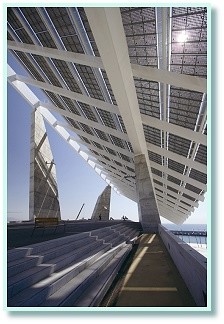 |
| Paris–encouraging its citizens to ride bikes more
to reduce pollution and traffic in central areas. © Photographer: David Hughes, Agency: Dreamstime.com |
Giant solar panel in
Barcelona. © Photographer: Andrew Chambers, Agency: Dreamstime.com
|
Another good example of successful environmental action at the local level is Barcelona’s solar power project. Being the first European city to implement a Solar Thermal Ordinance (STO) in 2000, Barcelona has made it compulsory to use solar energy to supply 60 percent of running hot water in all new buildings, renovated buildings or buildings changing their use. The ordinance applies to both private and public buildings, and is designed to harness the city’s 2,800 average hours of annual sunshine. Managed by the Barcelona Energy Agency (BEA), it is estimated that over 25,000 MW are saved annually due to the implementation of the ordinance. The scheme has been followed by dozens of cities across Spain, inspiring national legislation with similar, although less stringent, requirements.
Climate change is indeed a global issue that demands international
and national collaboration and action. Yet, as quoted at the beginning,
the origin of the problem is local, and the social responsibility lies
with every level of government, all kinds of groups, right down to every
single citizen of Earth. Thank you and congratulations to all these European
cities that have courageously taken the responsibility and come up with
so many effective initiatives to help sustain this beautiful planet God
has bestowed upon us. Hopefully all of us will be inspired by their actions
and spirit, to bring environmental concern to our daily life and give
any assistance we can to help restore our wonderful planet. ![]()
| << | Contents | >> |
| Refer
this page to friends |
||